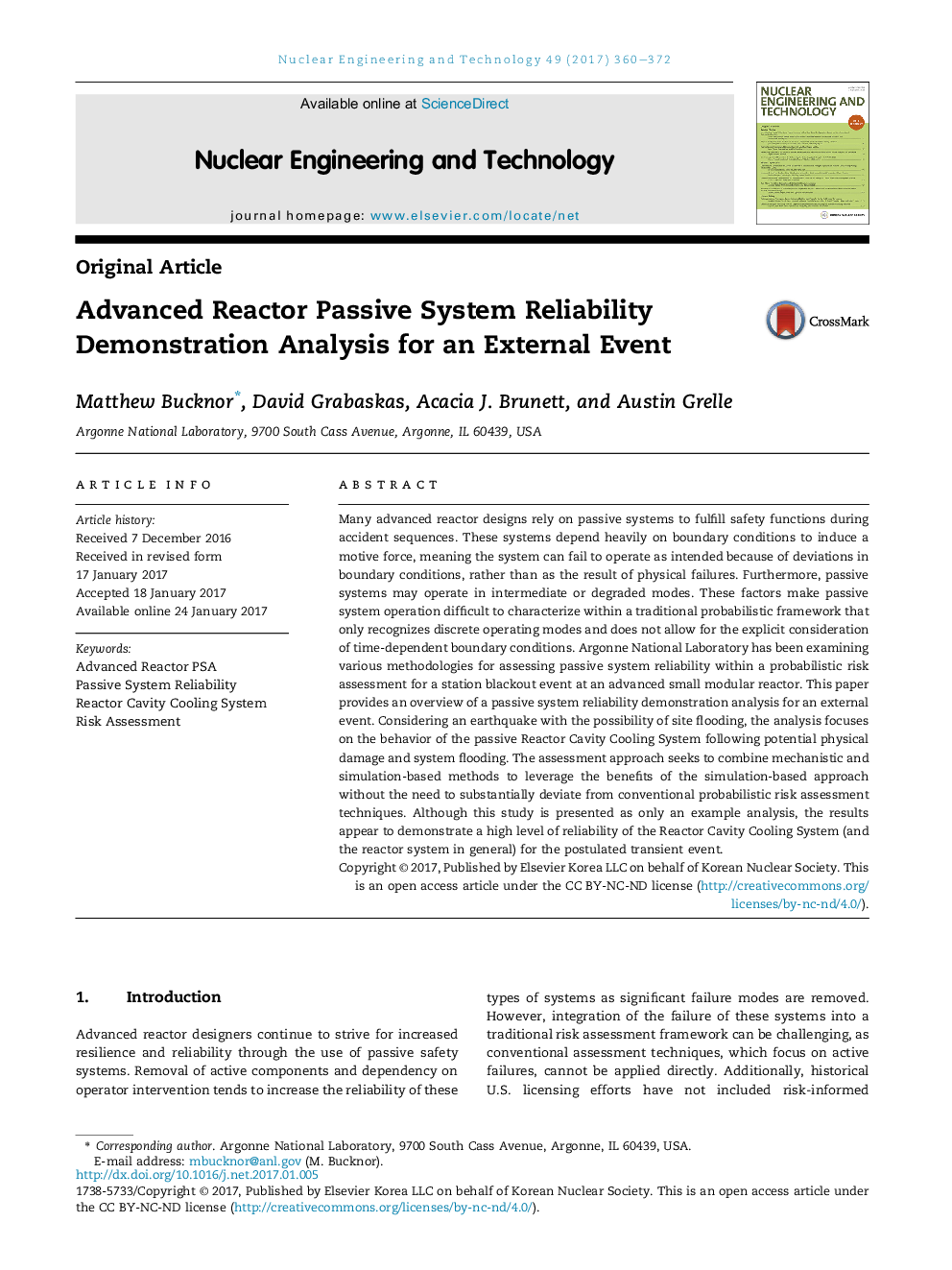| Article ID | Journal | Published Year | Pages | File Type |
|---|---|---|---|---|
| 5477987 | Nuclear Engineering and Technology | 2017 | 13 Pages |
Abstract
Many advanced reactor designs rely on passive systems to fulfill safety functions during accident sequences. These systems depend heavily on boundary conditions to induce a motive force, meaning the system can fail to operate as intended because of deviations in boundary conditions, rather than as the result of physical failures. Furthermore, passive systems may operate in intermediate or degraded modes. These factors make passive system operation difficult to characterize within a traditional probabilistic framework that only recognizes discrete operating modes and does not allow for the explicit consideration of time-dependent boundary conditions. Argonne National Laboratory has been examining various methodologies for assessing passive system reliability within a probabilistic risk assessment for a station blackout event at an advanced small modular reactor. This paper provides an overview of a passive system reliability demonstration analysis for an external event. Considering an earthquake with the possibility of site flooding, the analysis focuses on the behavior of the passive Reactor Cavity Cooling System following potential physical damage and system flooding. The assessment approach seeks to combine mechanistic and simulation-based methods to leverage the benefits of the simulation-based approach without the need to substantially deviate from conventional probabilistic risk assessment techniques. Although this study is presented as only an example analysis, the results appear to demonstrate a high level of reliability of the Reactor Cavity Cooling System (and the reactor system in general) for the postulated transient event.
Keywords
Related Topics
Physical Sciences and Engineering
Energy
Nuclear Energy and Engineering
Authors
Matthew Bucknor, David Grabaskas, Acacia J. Brunett, Austin Grelle,
